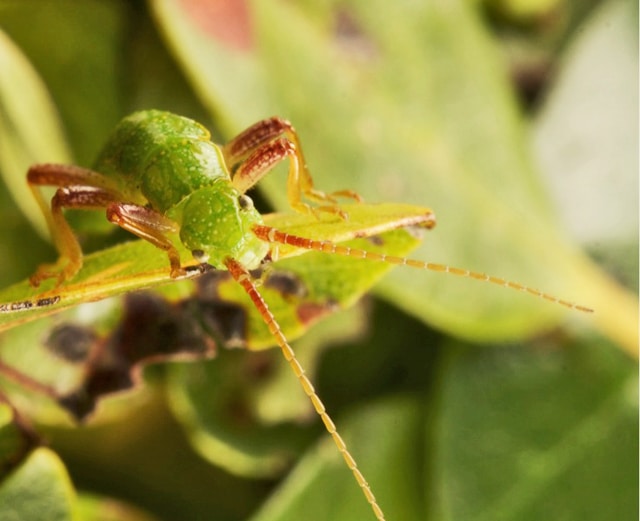For stick insects, a mate who smells good may be just as important as one who looks good.
This finding could explain why, when looks are deceiving, the insects can still show a preference for mates from the same species—a key to evolutionary success.
As reported in Nature Ecology and Evolution, scientists examined stick insect populations in California to try to better understand what drives the formation of new species.

In evolutionary terms, the ability to avoid mixing genes with other species is important to preserve differences between species and evolve characteristics that are advantageous to survival. Natural selection plays a large part in this. For example, if an insect population has developed an effective camouflage that prevents birds from eating them, a new population of non-camouflaged individuals moving into the area might not last long, and so would be only a minor threat to the gene pool.
“These walking sticks use smell to choose their mates and they discriminate between different populations based on this chemical sex appeal,” says coauthor Cristina Sandoval, a biologist at the University of California, Santa Barbara and director of Coal Oil Point Reserve, one of seven UC Natural Reserve System locations overseen by UC Santa Barbara.
But scientists think that natural selection is not the whole picture: any survivors of predation could still mate, so what other factors might further promote speciation—or the development of new and distinct species? The answer, at least for some groups of insects, appears to be largely down to the insects’ natural perfume.
Stick insect genomes
The research team studied 11 different Timema species in more than 100 populations of stick insects, over nearly two decades, to try to find some answers to this evolutionary puzzle of how new species form.
The investigators sequenced more than 1,000 individual Timema genomes. This let them correlate DNA changes with changes in physical traits such as color patterns or scent.
“We know from previous studies that a predator’s discrimination on color pattern selections contributes to the beginning of the changes in the DNA, but only on the specific gene that determines color pattern,” Sandoval explains. “Changes in Timema sex appeal chemistry caused an even bigger chunk of the DNA to change, so that looks to be a more important trait for the formation of species in this genus.”
Pesky snails pick food by smell not taste
“Species formation generally takes place over huge timescales and it’s very difficult to observe directly—mainly we just get snapshots of what’s happening at a particular moment in time,” says Patrik Nosil, of the department of animal and plant sciences at the University of Sheffield. “What we’ve done is to take many snapshots and start to reconstruct the evolutionary process to build up a picture of what might be happening across these different populations and moments in time.”
The researchers noticed that stick insects from different populations and species were unwilling to mate with each other. They discovered that mate choice appeared to be based on the mixture of particular chemical compounds on their skin that made them more or less attractive to each other.
These oily chemicals protect the insects’ bodies and prevent them from drying out—but they also play an important role in “signaling” to attract suitable mates.
Artificial ‘perfume’
The team also studied what happened when female stick insects were “perfumed” artificially with chemicals, either from their own or a different species, and found this directly affected how attractive they were to males.
“We think these skin chemicals are the next step in speciation,” says Nosil. “Even if the insects survive when placed into a different environment, the chemicals on their skin provide the next barrier to them mixing their genes.”
Bearcats entice mates with popcorn-smelling pee
Even scent, however, is not a completely foolproof guarantee of species differentiation. Stick insects are still likely to occasionally mix and mate between populations even when they differ chemically.
“It takes a very long time to produce a new and entirely distinctive species. We think that natural selection and mate choice can cause substantial progress towards the formation of new species, but we still do not know what other factors help complete this process by preventing the insects from mixing their genes at all,” adds Rudiger Riesch of Royal Holloway, University of London.
The European Research Council, the Natural Science and Engineering Research Council of Canada, the Human Frontier Science Program, the Royal Society of London contributed funding to the work.
Source: University of Sheffield, UC Santa Barbara



